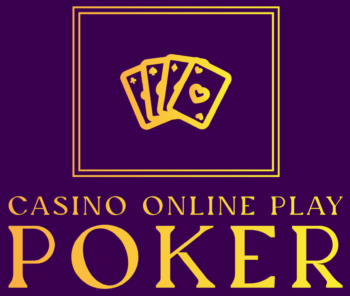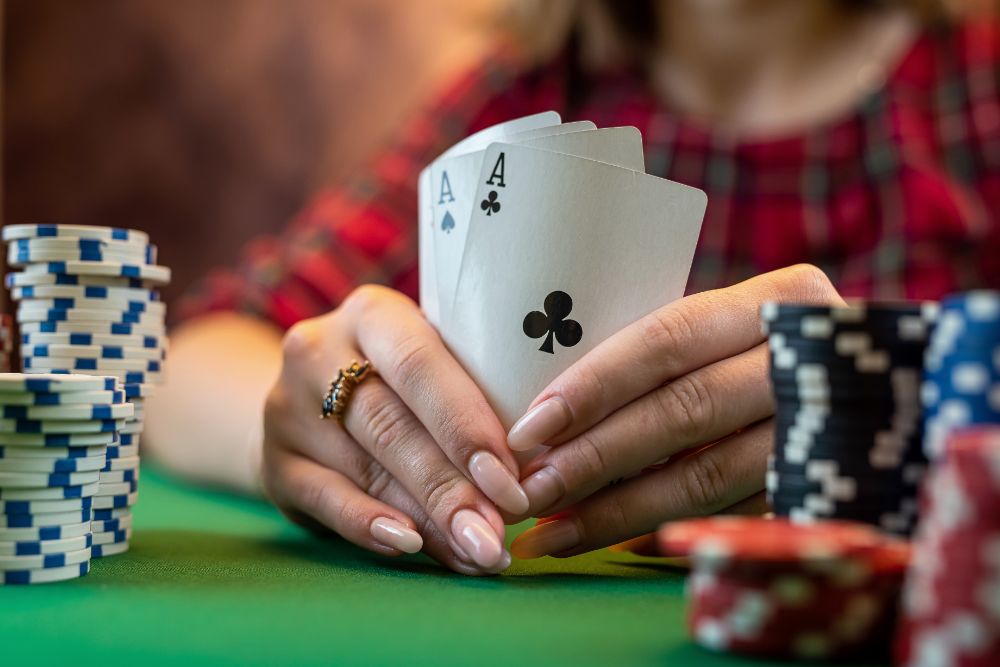Blackjack fundamentals begin with understanding card values and basic rules.
Numbered cards retain their face value, face cards are worth 10, and aces can be counted as 1 or 11. After grasping these basics, players should learn essential strategies for different scenarios.
These include decisions on when to hit, stand, double down, or split pairs.
One key strategy involves hitting when holding a hand total of 12-16 while the dealer shows a 7 or higher.
This approach can potentially improve the player’s position, as standing in this situation often leads to a disadvantage against the dealer’s likely strong hand.
However, successful Blackjack play extends beyond these basic decisions.
Players should also consider:
- Card counting techniques
- Bankroll management
- Understanding table rules and variations
- Recognizing and adapting to different dealer styles
Mastering these aspects requires practice, observation, and continuous learning.
While basic strategy provides a solid foundation, advanced players often develop more nuanced approaches based on statistical probabilities and situational awareness.
It’s important to note that while strategy can improve a player’s odds, Blackjack remains a game of chance with a built-in house edge.
Responsible gambling practices and realistic expectations are crucial for long-term enjoyment and financial stability.
Key Takeaways
- Understand Basic Strategy: Follow basic strategy guidelines to make optimal decisions based on your hand and the dealer’s upcard.
- Manage Your Bankroll: Set a budget, divide it into smaller betting units, and choose lower-stakes tables to extend playing time.
- Know When to Hit or Stand: Hit on 12-16 against dealer’s 7 or higher and stand on 12-16 against dealer’s 2-6.
- Double Down and Split Wisely: Double down on 10 or 11 against dealer’s 2-9 and always split aces and eights.
- Avoid Common Mistakes: Don’t split tens or fives, and adhere to a basic strategy chart to avoid suboptimal plays.
Understanding the Basics
Blackjack is a card game with specific rules and objectives. The primary goal is to achieve a hand value closer to 21 than the dealer’s hand without exceeding 21.
Card values are as follows: numbered cards retain their face value, face cards (jack, queen, king) are worth ten, and aces can be valued at either one or eleven, depending on the player’s advantage.
The game begins with the player placing a bet. Both the player and dealer receive two cards, with one of the dealer’s cards face down.
Players then decide whether to “hit” (request another card) or “stand” (maintain current hand). Additional options may include “double down” or “split” under certain conditions.
Victory is achieved by having a higher hand value than the dealer or when the dealer exceeds 21 (busts).
A “blackjack,” consisting of an ace and a ten-value card on the initial deal, typically offers an increased payout.
Understanding these fundamental concepts is crucial for developing effective blackjack strategies.
Players must consider their hand value, the dealer’s visible card, and the probability of drawing beneficial cards when making decisions.
Mastering these basics forms the foundation for more advanced play and potentially improving one’s odds of success in blackjack.
Learning the Rules
Blackjack is a card game where players aim to achieve a hand value closer to 21 than the dealer without exceeding it.
The game’s fundamental rules are as follows:
-
Card values:
- Cards 2-10: Face value
- Face cards (Jack, Queen, King): 10
- Ace: 1 or 11, depending on the player’s advantage
-
Initial deal:
- Players receive two cards, both face-up
- Dealer receives two cards, one face-up and one face-down
-
Player options:
- Hit: Request additional cards
- Stand: Keep current hand
- Double down: Double initial bet and receive one more card
- Split: Separate two cards of equal value into two hands
-
Dealer’s play:
- Must hit on 16 or lower
- Must stand on 17 or higher
-
Winning conditions:
- Player’s hand closer to 21 than dealer’s
- Dealer busts (exceeds 21)
-
Losing conditions:
- Player busts
- Dealer’s hand closer to 21 than player’s
Understanding these basic rules is essential for developing effective blackjack strategies.
Advanced techniques build upon this foundation, incorporating statistical analysis and probability calculations to optimize decision-making during gameplay.
Blackjack Terminology
Blackjack terminology serves as a crucial component for effective gameplay.
The dealer, representing the house, manages card distribution. Players aim to surpass the dealer’s hand without exceeding 21.
Key terms include:
- Hit: Request for an additional card
- Stand: Decision to maintain current hand
- Double Down: Doubling the initial bet and receiving one more card
- Split: Dividing two cards of equal value into separate hands
- Insurance: Side bet offered when dealer’s first card is an Ace
- Bust: Hand total exceeding 21, resulting in automatic loss
- Push: Tie between player and dealer, resulting in bet return
Understanding these terms facilitates quicker decision-making and enhances game comprehension.
However, it’s important to note that certain strategies, such as taking insurance, are generally not recommended by statistical analysis.
Proficiency in blackjack terminology contributes to more informed gameplay and potentially improved outcomes.
Players should focus on mastering these terms to navigate the game more effectively and make strategic decisions based on the current state of play.
Card Values Explained
In blackjack, card values are essential for strategic decision-making. Cards 2 through 10 maintain their face value, with a 3 worth 3 points, a 7 worth 7 points, and so on.
Face cards (Kings, Queens, and Jacks) are valued at 10 points each, potentially increasing a hand’s total rapidly.
Aces have a dual value of either 1 or 11 points, depending on which benefits the hand more. For instance, an Ace paired with a 6 can be counted as either 7 or 17.
This flexibility makes Aces particularly valuable in gameplay. Accurate understanding of card values is crucial for developing an effective strategy.
Miscalculating hand totals can lead to unintended busting or missed winning opportunities. Consistent awareness of these values contributes to informed decision-making at the blackjack table.
Players should consider their entire hand when determining the optimal value for an Ace. This consideration helps in maximizing the potential of each hand and adapting to various game situations.
Basic Strategy Tips
Now that you know the card values, let’s tackle some basic strategy tips.
You’ll need to understand when to hit and when to split pairs to improve your chances of winning.
These decisions can make a significant difference in your gameplay.
When to Hit
Hitting in blackjack involves requesting an additional card from the dealer to improve the hand’s value.
The decision to hit depends on several factors, including the player’s hand total and the dealer’s visible card.
For hand totals between 12 and 16, hitting is typically recommended when the dealer’s upcard is 7 or higher. This strategy aims to improve the player’s hand against the dealer’s potentially strong position.
When the dealer shows a low card (2 through 6), standing with a 12-16 hand may be preferable, as the dealer has a higher probability of busting.
Players should always hit on hand totals of 11 or less, as it’s impossible to bust with one additional card.
Hitting on a soft 17 (an Ace and a 6) is generally advised due to the flexibility of the Ace’s value.
These guidelines are based on statistical probabilities and aim to optimize the player’s chances of winning over time.
However, it’s important to note that blackjack outcomes are ultimately determined by chance, and no strategy guarantees consistent success.
Splitting Pairs
Splitting pairs is a strategic option in blackjack that can potentially improve a player’s odds when used correctly.
This technique involves separating two cards of equal value into two separate hands, each receiving an additional card.
Certain pairs are generally recommended for splitting:
- Aces: Splitting creates two opportunities for strong hands, including blackjacks.
- Eights: Splitting transforms a weak 16 into two hands with potential for improvement.
Conversely, some pairs are typically not advised for splitting:
- Tens and face cards: A hand totaling 20 is already strong and unlikely to be improved by splitting.
- Fives: These are better played as a single hand with a value of 10, providing a solid foundation for hitting.
- Fours: Generally more advantageous when played as a single hand of 8, offering flexibility without risking two weak hands.
The dealer’s upcard is a crucial factor in deciding whether to split. When the dealer shows a strong card (7 or higher), splitting lower pairs like 2s or 3s may be less advisable due to the increased likelihood of the dealer having a winning hand.
Effective use of pair splitting requires careful consideration of the specific cards, the dealer’s upcard, and the overall game situation. Proper application of this strategy can enhance a player’s long-term performance in blackjack.
When to Hit or Stand
The decision to hit or stand in blackjack is based on a strategic assessment of the player’s hand value and the dealer’s visible card.
When a player’s hand totals 12 to 16 and the dealer shows a 7 or higher, hitting is generally recommended. This strategy is founded on the probability that the dealer will achieve a hand of at least 17, necessitating the player to improve their hand to remain competitive.
For hands totaling 17 or more, standing is typically the advised action, irrespective of the dealer’s upcard.
This approach is rooted in the high risk of exceeding 21 (busting) if another card is drawn. An exception to this rule occurs with a soft 17 (an Ace and a 6), where hitting may be considered due to the flexibility of the Ace’s value.
When a player’s hand is between 12 and 16 and the dealer’s upcard is 2 through 6, standing is often the optimal choice.
This strategy capitalizes on the increased likelihood of the dealer busting with a weak upcard, allowing the player to maintain their position without additional risk.
Adherence to these guidelines can contribute to more informed decision-making during blackjack gameplay, potentially improving long-term outcomes.
However, it’s important to note that while these strategies are based on statistical probabilities, they don’t guarantee success in every hand or session.
Doubling Down
Doubling down in blackjack is a strategic option that allows players to increase their initial bet by 100% in exchange for receiving only one additional card. This move is typically employed when the player believes they’ve a strong probability of winning the hand.
The most common scenarios for doubling down occur when the player’s initial two-card total is 10 or 11, and the dealer’s exposed card is relatively weak (2 through 9).
This strategy is based on the mathematical probability that the player will receive a ten-value card (10, Jack, Queen, or King), resulting in a strong hand of 20 or 21.
However, doubling down isn’t always advisable. When the dealer’s upcard is strong (10 or Ace), the risk often outweighs the potential reward.
In these situations, the dealer has a higher probability of achieving a strong hand, reducing the player’s chances of winning even with a successful double down.
It is important to note that casino rules regarding doubling down may vary. Some establishments restrict doubling down to certain hand totals or limit it to two-card hands only.
Players should familiarize themselves with the specific rules of the casino or table before implementing this strategy.
While doubling down can potentially increase winnings, it also increases the amount at risk. Players should carefully consider their hand, the dealer’s upcard, and their overall betting strategy before deciding to double down.
Splitting Pairs
Splitting pairs in blackjack is a strategic option that can potentially increase a player’s chances of winning when used appropriately.
When dealt two cards of equal value, players may choose to split them into two separate hands, effectively doubling their initial wager and creating two opportunities to win.
Optimal splitting strategies include:
-
Always splitting aces and eights:
- Splitting aces provides two chances to achieve a strong hand, potentially resulting in blackjacks.
- Splitting eights helps avoid the unfavorable total of 16, which is statistically one of the weakest hands in blackjack.
-
Avoiding splitting tens and fives:
- A pair of tens already constitutes a strong hand of 20.
- Fives can be more effectively utilized through doubling down, potentially resulting in a favorable hand.
-
Considering the dealer’s upcard:
- When the dealer shows a weak card (4, 5, or 6), splitting pairs such as twos, threes, or sevens can be advantageous.
- This strategy aims to capitalize on the dealer’s increased likelihood of busting.
It is important to note that splitting pairs should be approached with careful consideration of the specific game rules, deck composition, and overall strategy.
While splitting can be beneficial in certain situations, it also increases the total amount wagered, potentially leading to greater losses if not executed judiciously.
Avoiding Common Mistakes
It’s easy to make errors when you’re new to Blackjack, but avoiding common mistakes can save you money and frustration.
Misunderstanding basic strategy often leads to poor decisions, while chasing losses impulsively can quickly drain your bankroll.
Stick to a solid strategy and manage your emotions to improve your game.
Misunderstanding Basic Strategy
Misunderstanding basic strategy in blackjack is a common issue that can lead to suboptimal decision-making at the table.
Basic strategy is based on mathematical probabilities and is designed to minimize the house edge over the long term. Many players incorrectly rely on intuition or personal beliefs rather than adhering to this proven approach.
One frequent error is the misconception that players should always hit on hands valued 12-16. In reality, basic strategy dictates that standing is sometimes the correct play, depending on the dealer’s upcard.
This decision is based on statistical analysis of potential outcomes.
Doubling down is another area where misunderstandings occur. Basic strategy provides specific guidelines for when to double down, such as having a total of 11 when the dealer shows a lower card.
Failing to follow these recommendations can result in missed opportunities to maximize potential returns.
Pair splitting is also subject to misinterpretation. While it’s generally accepted that aces and eights should always be split, decisions on other pairs depend on the dealer’s upcard.
Incorrect splitting can lead to weaker hands compared to keeping the original pair.
Adhering to a basic strategy chart, rather than relying on personal instincts, is crucial for consistent and optimal play.
This approach helps players avoid common mistakes and improve their overall performance in blackjack.
Chasing Losses Impulsively
Chasing losses in blackjack is a common behavior that can lead to significant financial consequences.
This practice involves increasing bet sizes after experiencing losses, with the aim of recouping previous losses quickly. However, statistical evidence shows that this approach often results in further losses and can rapidly deplete a player’s bankroll.
Maintaining a consistent betting strategy and adhering to predetermined limits is crucial for responsible gambling.
Blackjack outcomes are influenced by both skill and chance, with short-term results often subject to variance. Accepting this inherent uncertainty can help players make more rational decisions and avoid emotionally-driven betting patterns.
Effective bankroll management is essential for sustainable blackjack play.
Setting a budget before playing and strictly adhering to it helps mitigate the risk of excessive losses. Regular breaks during gameplay can also improve decision-making by reducing fatigue and emotional stress.
Research in gambling psychology indicates that frustration and negative emotions can impair judgment and lead to suboptimal choices.
When experiencing a losing streak, it’s advisable to cease play and reassess one’s strategy rather than continuing under emotional duress. This approach helps preserve both financial resources and mental well-being.
Bankroll Management
Bankroll management is a fundamental aspect of successful blackjack play.
Proper management techniques can help mitigate losses and extend playing time.
Setting a predetermined budget before gameplay is essential.
This budget should represent an amount the player is comfortable risking without financial strain.
Dividing the total bankroll into smaller betting units is a common practice.
For example, a $200 bankroll might be divided into 20 units of $10 each.
This approach allows for more controlled betting and reduces the risk of rapid bankroll depletion.
Table selection is another critical factor in bankroll management.
Players should choose tables with limits that align with their available funds.
Lower-stakes tables are generally more suitable for players with limited bankrolls, as they provide extended playtime and increased opportunities for positive variance.
Adhering to these bankroll management principles can contribute to a more sustainable and potentially profitable blackjack experience.
However, it’s important to note that even with proper bankroll management, blackjack remains a game of chance with a built-in house edge.
Wondering Understanding the House Edge: What Every Gambler Should Know? Read our article for detailed insights.
Conclusion
Mastering Blackjack starts with understanding the basics and familiarizing yourself with key strategies. Always remember to hit on low totals and know when to double down or split pairs. Avoid common mistakes and manage your bankroll wisely. With these tips and tricks, you’ll be well on your way to becoming a confident player at the Blackjack table. So, go ahead, practice, and enjoy the game responsibly. You’re ready to take on the dealer!


